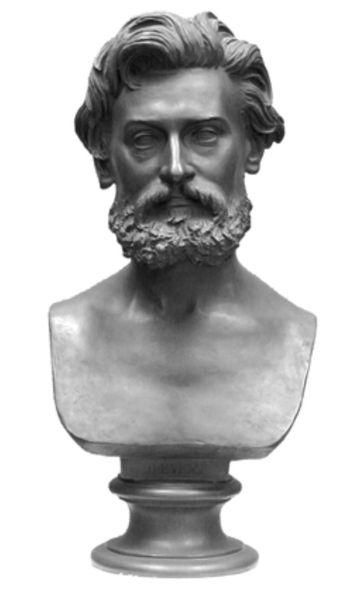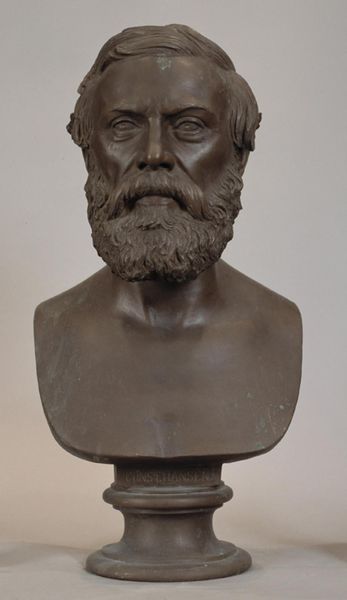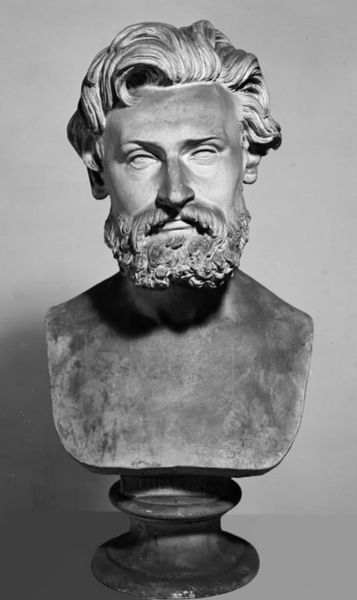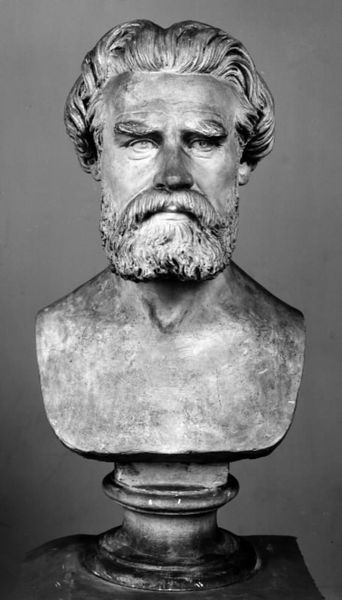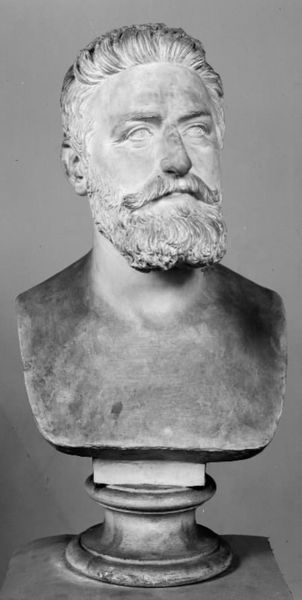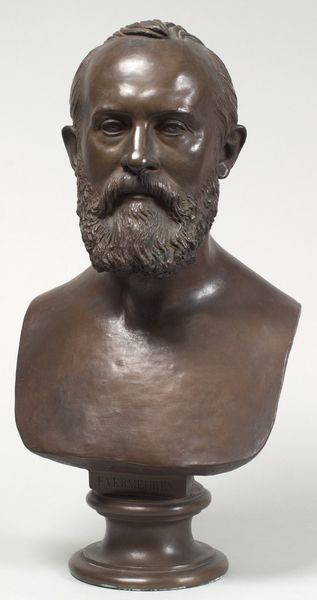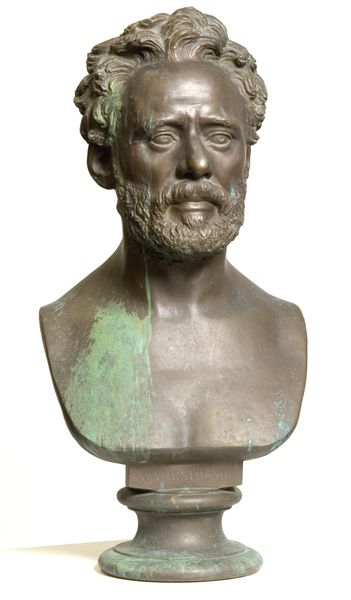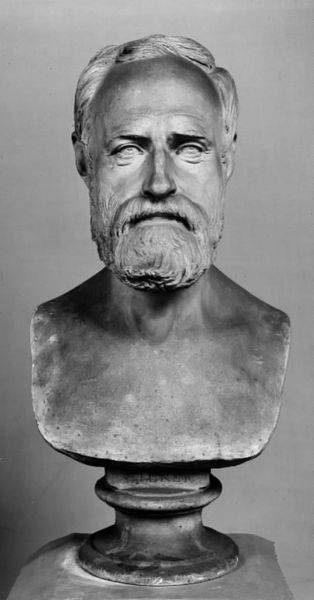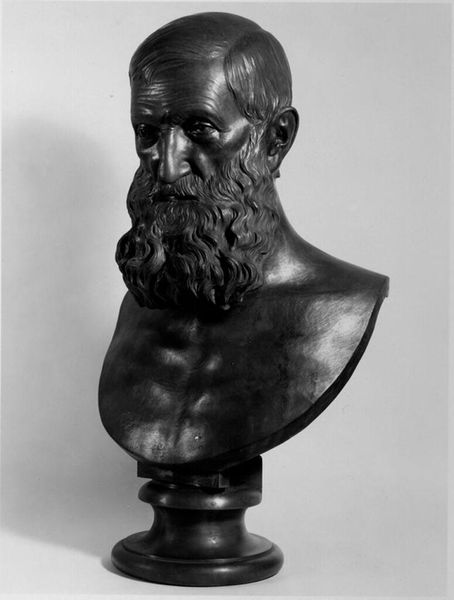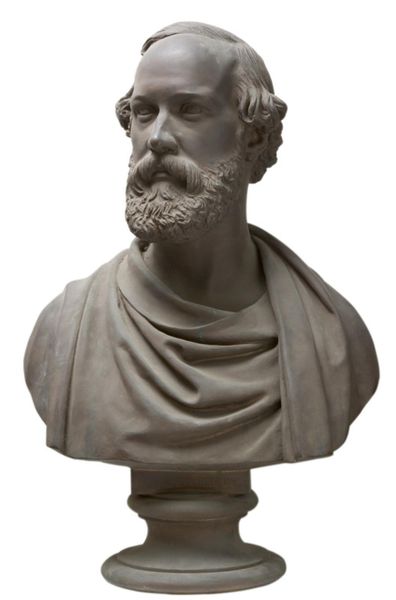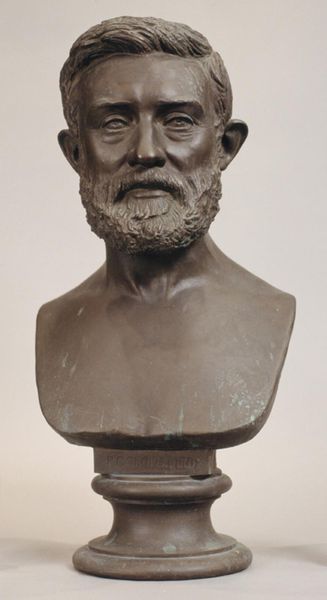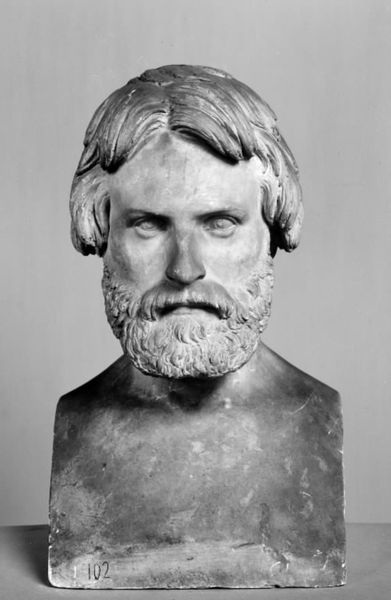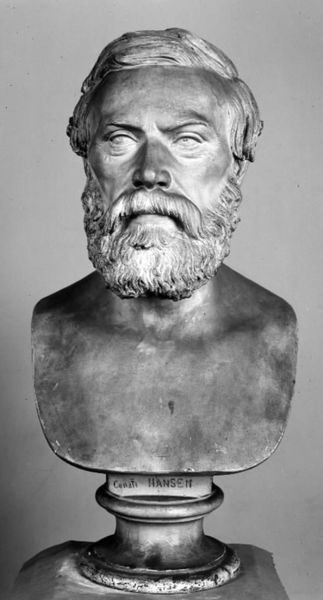
Dimensions: 64.5 cm (height) (Netto)
Curator: Oh, hello there! This strikes me as incredibly dignified, stoic even. All that bronze lending a monumental weight to the man’s presence, doesn't it? Editor: Indeed. What you're responding to is embodied by "The Sculptor Vilhelm Bissen", crafted in 1862 by his son, H.W. Bissen. It's currently housed here at the SMK. The Neoclassical influence is unmistakable, hearkening back to a fascination with the sculpted portraits of antiquity. Curator: It certainly does. But I think, despite the material, it's got a very intimate, lifelike quality, too. Almost a feeling of wanting to understand the burden he must have carried. There's a palpable tension between idealized form and lived experience in those furrowed brow and textured beard. Editor: Exactly. The Bissen family were monumental figures themselves. This bronze bust participates in what we might call the cult of the artist – these idealized portraits elevated artists to a status rivaling heads of state and heroic figures, really emphasizing their contributions to society and the State through their art. Curator: You make an interesting point; it suggests not just commemorating the man but validating sculpture as an important form of artistic production and its elevated place in Danish Society and collective memory. It is difficult to know what burdens weighed heavily on his mind – but here, writ in bronze for eternity is recognition, appreciation. Perhaps there are ways in which an artwork like this allows us to contemplate on larger societal structures that allow individuals like Bissen to flourish in his craft. Editor: Precisely. The very act of casting him in bronze is significant. The piece immortalizes Bissen in a manner that makes the man timeless, like the classical works of Ancient Greece and Rome. So in one gesture, his son honours his father and establishes his own reputation within this artistic lineage and wider societal memory. Curator: Well, what a wonderful way for an artistic practice to extend itself into society. You do tend to see that with a sculptor, don't you, where immortality and physical endurance really meet. Thank you! Editor: My pleasure. I appreciate your nuanced perspectives, and indeed the immortality found in stone and metal makes sculpture quite special within our broader historical narrative!
Comments
No comments
Be the first to comment and join the conversation on the ultimate creative platform.
